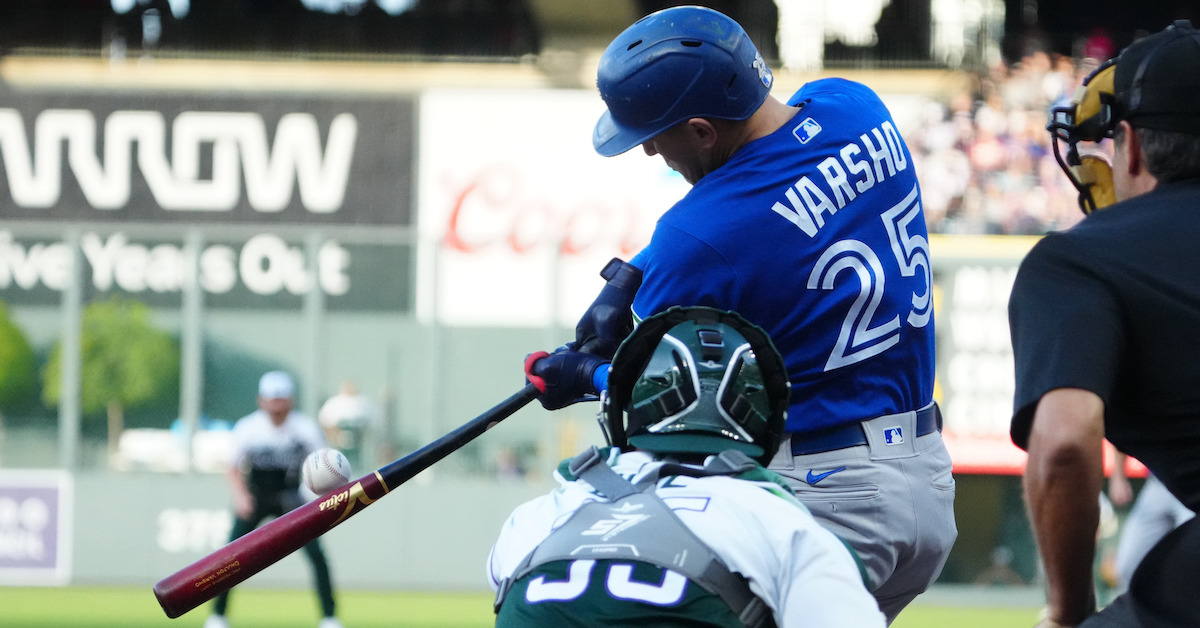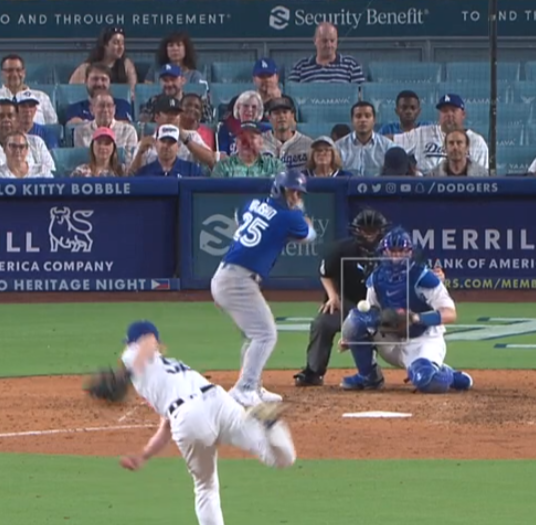CJ Abrams Is Running Into Too Many Outs

CJ Abrams is one of the blossoming stars in today’s game. Entering play Friday, the 23-year-old shortstop who recently made his first All-Star appearance is batting .260/.333/.467 with 15 home runs, 16 stolen bases, a 122 wRC+, a .344 wOBA, and 1.9 WAR over 422 plate appearances. During the first month of what’s turned out to be his breakout season, I wrote about Abrams’ stellar offensive start. About a month-long slump followed, but he bounced back in late May and is showing that his plus-offensive profile is here to stay.
Now in his third season, Abrams is proving he can be the centerpiece that the Nationals can build around. Beyond his bat, his aggressive baserunning and speed make him one of the most dynamic young players in the game. Last year, despite his inconsistencies at the plate, Abrams was a menace on the paths. Thanks to his 28.6 ft/sec sprint speed (82nd percentile), according to Baseball Savant, he was worth +3 runs on the bases; he swiped 47 bags and had a 9.2 BsR.
This year, Abrams has been just as fast, but at least according to BsR, he is no longer a plus baserunner. (Baseball Savant says he’s been worth +1 run on the bases this year, which ranks 71st; he was no. 23 on last year’s leaderboard.) That’s because he’s been caught stealing 10 times already, with five of them coming via pickoffs, plus another pickoff that didn’t come on an attempted steal.
In 2023, Abrams went 47-for-51 on stolen base attempts. If he took off, the odds were in his favor. Pitchers weren’t exposing him for taking too big of leads or being overly aggressive. This year, his precipitous drop to 16-for-26 has been staggering. When a player who was so recently a great basestealer runs into a slump like this, it warrants a deep dive into understanding what exactly is going on. There are a few components of the steal that we have to pay attention to when trying diagnose this type of issue: the lead, the jump, and the situation. Let’s go through each piece and find out what’s gone wrong for Abrams. Here is a compilation of his pickoffs this year:
None of these look particularly great. He was either off balance or out by a good margin on almost every play. We can trace some of this back to his leads, so let’s start there. There are two main ways to take a lead against a lefty if you are thinking about attempting to steal second. You can take a normal 12-foot lead like Abrams did against Sean Manaea and then run on the pitcher’s first movement (as soon as the pitcher lifts his leg). Or, you can take a larger, one-way lead to possibly draw a throw over and get a feel for the pitcher’s pickoff move.
For the first one, you want to stay close enough to the bag so the pitcher doesn’t pick you off, but you want to get far enough out there that you have a good chance to be safe at second even if he does throw over; as soon as the pitcher lifts his leg, you break for second. For the one-way lead, you are an extra step or two toward second, but you are not attempting to steal on the upcoming pitch. Instead, you put all your weight on your left foot, toward first base, so you can dive back safely if the pitcher attempts to pick you off. If the pitcher doesn’t throw over, you are timing up his delivery so you can get a better jump if you decide to steal later. That doesn’t appear to be what Abrams was doing in the video above. All three times he has been picked off by a lefty this season have come early in the count, twice on the second pitch of the plate appearance and once on the first pitch.
In the 1-0 count against Manaea, Abrams took a standard 12-foot lead. He attempted to go on first movement but realized he would’ve been dead to rights, so he hesitated into shuffles instead. He should have just kept going and forced Pete Alonso to make a play. This was the most obvious mental mistake of the three. Against left-handers Kirby Snead and Alex Vesia, Abrams went on first movement, but because each pitcher expected him to go and was well-prepared to throw over, the defense caught him easily. As a pitcher, you know Abrams is an aggressive runner, but why in these two cases was it so easy? Well, this is a good time to point to Abrams’ tendencies.
Eight of his 16 swipes this season came on the first pitch, and of his six pickoffs, four were on the first pitch. If you’re a pitcher looking to control Abrams’ aggression, do it early. For lefties, it’s even easier to execute because you’re facing him as he leads off first. This goes back to the situational aspect I brought up before. Pitchers are smart, and these are the exact types of tidbits they become aware of as they prep for a good basestealer. Combine the early counts with pitchers being more willing to throw over if they haven’t yet used their allotted disengagements, and you have tough recipe for success. A potential solution here is for Abrams to wait for deeper counts before trying to steal.
The right-handed pitchers in these clips are equally prepared for Abrams to run early. He often uses the vault lead against righties. As a reminder, the vault lead is when you take your primary lead at about nine or 10 feet instead of 12. You take your same athletic stance and shuffle about 2-3 feet just as the pitcher lifts his leg. The momentum from your vault helps you accelerate into your sprint quicker than you would with a traditional, static lead, albeit with risks. The key to a successful vault lead is not the size of your shuffle; it’s your timing. If you venture too far out before or after the shuffle, or you mistime your vault and are in the air when the pitcher disengages to throw over, you risk getting picked off.
At times this season, Abrams has made both mistakes on his vault leads: Either his primary leads or his shuffles are too large. The vault lead is more technical than physical, based more on mechanics than reflexes and pure speed. Abrams is fast enough and reacts quick enough to steal bases with a traditional lead against favorable matchups, so if I were him, I would temporarily abandon the vault lead and work on getting the fundamentals down again before bringing it back in games.
Before letting you go, I also want to look at the plays on which Abrams was thrown out by a catcher to see if these caught stealings were because of bad decisions, poor jumps, or good defense. Here is a quick reel:
Off the rip, there are three plays that stick out. If you’re going to attempt steals against Gabriel Moreno and Patrick Bailey – perhaps the two best throwers in the sport – you have to pick your spots wisely. In the Arizona game, the Nationals were up two runs and the count was 0-2, providing a good opportunity to run and try to avoid a double play; against the Giants, my guess is he wanted to get into scoring position with two outs. These are valid enough reasons to run despite the poor matchups and are not comparable to the pickoff mistakes.
In the game against the Red Sox, righty Brayan Bello, who has an extremely quick slide step, was on the bump. Even runners who are faster than Abrams would have trouble reaching second safely when a pitcher delivers a 96-mph heater in the middle of the zone on a slide step. And perhaps not surprisingly, this came on the first pitch of the at-bat.
On the first play in the clip, against the Rockies, Abrams attempted to swipe third with a left-handed batter up. Even without seeing the quality of the lead that Abrams took, this was a bad decision. Dakota Hudson never took his eye off of Abrams before he delivered his pitch, making it much more difficult for him to get a good jump. On top of that, catchers love when this happens because with a lefty batting they have a clear throwing lane to third base; when righties are hitting, catchers have a more difficult play because they need to step back and around the batter before firing. Even with an inaccurate throw from catcher Jacob Stallings, Abrams was canned.
Abrams is an aggressive runner. Without his aggressions, he wouldn’t be able to steal nearly 50 bases in a season like he did last year. This isn’t something you want to take away from him. However, he does need to learn from these mistakes so he can use his speed and aggression more effectively. Most of these pickoffs and unsuccessful steals resulted from some a combination of being predictable and getting too jumpy. The good news is he is talented enough to make the necessary adjustments. Once that happens, we’ll get to see a much more complete version of Abrams, one who can swipe 40 bags at a high clip and pepper the gaps with line drives.











